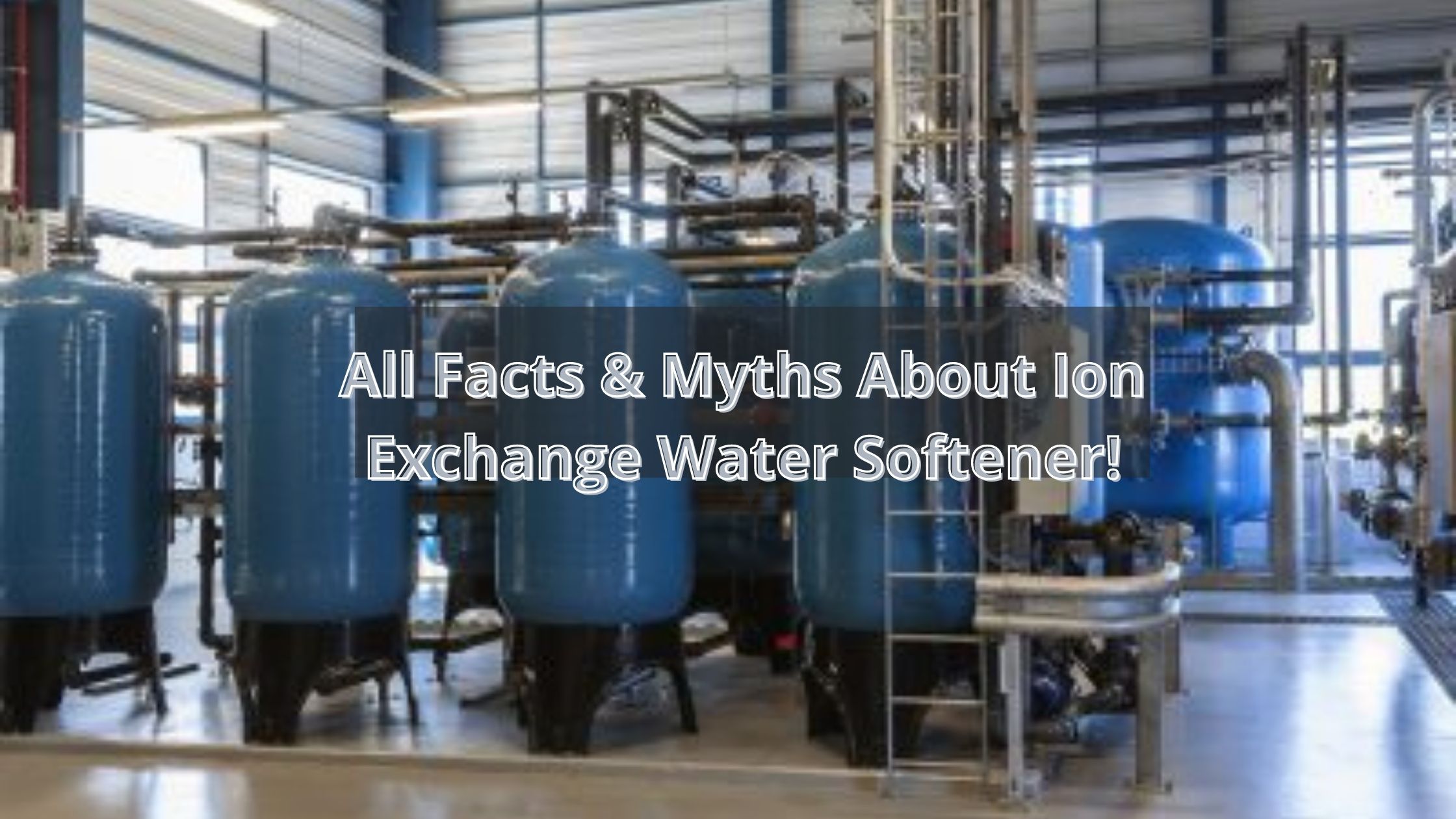Do you really want to know about Ion exchange water softener- how it works? Look no further. No matter you have to drink water or you need water to run a textile factory, soft water is a must. Hard water associates different types of complexities. So, you should look for soft water.
Ion exchange water softener works great for removing the hardness of water which you can’t eliminate by boiling the water. In this article, the working procedure of ion exchange water softener, the regeneration process everything is discussed briefly. Find it below!
What is hardness of water?
Water becomes hard by being in contact with soluble, metallic cations ( Positive ions having a valency of 2 ). The two main cations that cause water hardness are calcium and magnesium.
Permanent water hardness
Permanent water hardness is attributed to the presence of sulphates and chlorides of calcium and magnesium ions that can be removed by chemical means.Ion exchange water softener removes the permanent hardness. It involves the principle that the same ions repel each other while opposite ions attract each other.
Temporary water hardness
Temporary water hardness is attributed to the presence of bi-carbonates of calcium and magnesium ions. It can be easily removed by boiling of water.
What is Ion Exchange Resin
or
Ion Exchange Water Softener?
- Ion exchange resin is a new technology that is used for water softening or demineralization. Earlier, Zeolite was used for demoralization.
- Ion exchange resin or ion exchange water softener is a yellowish or white negatively charged bead which binds with positively charged magnesium or calcium ions.
- Many are based on polystyrene that has been partly crosslinked by incorporation of a small amount of divinylbenzene (2–10%). Suspension polymerisation of the styrene and divinylbenzene produces the crosslinked polymer in the form of small beads.
- These have the appearance of a fine white sand. Sulphonation of some of the benzene rings, mainly on the bead surfaces, provides anionic sites suitable for cation exchange.

How Ion Exchange Water Softener works?
- Previously, zeolite was used for water softening. But now synthetic polymer ion exchanger beats the zeolite water softening process. They are termed as ion exchange resins.
- They are based on polystyrene that is partly crosslinked by incorporation of a small amount of divinylbenzene (2–10%). Suspension polymerisation of the styrene and divinylbenzene produces the crosslinked polymer in the form of small beads.
- In a suitable pressure vessel tank, hard water passes over the man-made ion exchange resin beads. This resin (polystyrene divinyl benzen) is considered as a negative site. And hard water contains positively charged ions.
- Cation resin beads attract and hold positively charged ions. These ions remain on the beads until the beads entercounter other ions for which it has a greater affinity.
- Resin beads release Na+ and absorb Ca2+ and Mg2+ ions for which it has a greater attraction.
- Ions are not destroyed or changed chemically. They are simply replaced on the resin bead. This process is known as ion-exchange.
- Thus the ion exchange water softener delivers soft water.


The Softening Reaction –

R= Resin Macromolecule


So, What Is The Reason For Ion Exchange??
- Resin prefers stronger ions magnesium and calcium than sodium.
The Re-generation Process
- After a vast number calcium and magnesium ions have become attached to resin beads and most of the sodium ions have been released, the resin can no longer soften the water.
- As no new chemical reaction is set, the incoming calcium and magnesium ion flow untouched through the unit because there is no room for them on the resin beads.
- As no further softening takes place, then the resin is said to be exhausted. Now it needs to re-generate.
- For the regeneration process, Brine solution is used. During the regeneration process, service water flow is kept stopped.
- In a reservoir tank, salt is mixed with water. This brine solution is drawn from the reservoir which flows through the resin beads loaded with calcium and magnesium.
- The brine solution contains billions of sodium ions. Though calcium and magnesium ions are stronger than sodium, sodium can replace them because of their majority.
- Although the resin beads prefer calcium and magnesium ions, the excessive concentration of sodium ions overcome this affinity.
- The calcium and magnesium ions are forced off the resin beads and are discharged to waste.
- Then the resin beads are ready to remove more calcium and magnesium ions. But the degree to which the resin is converted depends upon the concentration of sodium in the brine. The reaction can be reversed by greatly increasing the concentration of sodium in the solution.
- Reverse processes drive off the calcium and magnesium ions off the resin beads and replace them with sodium ions.
- Eventually All the sodium ions are taken up by the exchange sites.The resin is then ready to use further.
The Reverse Reaction

R= Resin Macromolecule
Schematic Illustration For Water Softening and Regeneration Process


The problems associated with hard water
- Precipitates soap in curd like foaming causes “Bathtub ring”.
- Causes Dingy laundry (Yellowing, greying, loss of brightness and reduced life of washable fabrics)
- Feels unpleasant on skin
- Dries up your hair.
- Create white spots on dishes and silverware.
- Builds up limescale that reduces the appliances’ lifespans
- Builds up limescale in the water pipes
Benefits of using soft water
- Reduces cost
- Saves money
- Reduces chemical and dyes consumption.
- Saves time
- Makes fabric soft
- Helps in getting proper coloration as it doesn’t mess with color.
Do I Really Need An Ion Exchanger Water Softener?
- Of Course! It makes a perfect sense in spending money to buy ion exchange water softener for commercial use. It is mainly for non-residential purposes.
- If you run any textile business then you know the value of soft water. Water quality is one of the key factors in successful dye reaction. Minerals dissolved in the tap water can interfere with dye reaction, preventing a substantial portion of the dye from binding to the fiber. Hard water can mess up with the dye reaction.
- Again it reduces chemical and dye consumption which leads to save money for the dyers. Also makes the fabric softer without hard minerals getting trapped inside the fiber.
- You will need an ion exchange water softener if the hardness exceeds 35 grains per gallon.
Is there any alternative for ion exchange water softener?
- Lime soda softening and using chelating agents are used for hard water treatment.
- Science has brought up many benefits for us. Arizona State University found that template assisted crystallization process perform better..
- This process uses activated carbon which influences the nucleation sites of magnesium and calcium to make them less likely to adhere to the surfaces.
- This process doesn’t need any discharge line, electricity for regeneration or costing for salt. Rather it’s an easy process with an ease of maintenance and cheap installation.
For water softening, this is a good option.The industrialists often follow this process in their factory to get soft water.
Wrapping It Up!
Water softening is a must process in textile industry otherwise you have to face many difficulties to continue the further dyeing procedures. Ion exchange water softener plays an important role in this case.

